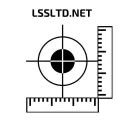The dumpy level has long been a staple instrument on construction sites and in surveying practice. While its primary purpose is levelling, many dumpy levels include stadia hairs that allow distance estimation. This method — known as the stadia method — is clever, simple, and historically important.
But just how accurate is it? Can you rely on a dumpy level for measuring distances, or is it only a rough guide? In this article, we’ll look at the accuracy of the stadia method, the sources of error, and why in modern practice it is rarely used beyond quick checks or teaching.
The Stadia Method in Brief
Most dumpy levels have three horizontal crosshairs in the telescope: a central line for levelling, and two stadia hairs above and below. By reading the intercept between the top and bottom stadia hairs on a levelling staff and multiplying the difference by a fixed constant (usually ×100), you can estimate the distance from the instrument to the staff.
For example:
- Upper stadia hair: 1.500 m
- Lower stadia hair: 1.200 m
- Intercept: 0.300 m
- Distance = 0.300 × 100 = 30 m
It’s straightforward and requires no extra kit — but the simplicity comes at a cost in accuracy.

The Limits of Accuracy
Resolution Limits
Because the reading depends on the difference between two staff intercepts, the smallest reliable measurement is about 0.1 m (10 cm). Even in ideal conditions, you cannot expect better accuracy than this — making it unsuitable for engineering-grade work where millimetre precision is required.
Staff Reading Errors
Surveyors typically use an E-graded staff, but human error in reading the markings is unavoidable. A small misread of even 1 mm is multiplied 100 times when scaled up, introducing a 0.1 m error in the final distance. In practice, you can only read an E-grad staff to an accuracy of 1 mm at best, and even then, different surveyors or engineers might interpret the same staff reading slightly differently. This natural variation in observation means that consistency is as important as precision — and it is one of the reasons the stadia method is never truly exact.

Scaling Error in the Instrument
The stadia method assumes that the stadia hairs are perfectly spaced, with a multiplication factor of 100. In reality, manufacturing tolerances mean the spacing may not be exact, particularly on cheaper or older instruments. This introduces a systematic scaling error that grows with distance.
The Skill of the Rod-Man
A factor often overlooked is the verticality of the staff. The rod-man or chainman must keep the staff perfectly upright. Even a slight lean changes the apparent readings on the stadia hairs, leading to overestimation of distance. Experienced staff holders can minimise this, but in practice it is a common source of error.
Environmental Influences
Conditions on site can make reading more difficult. Heat haze, vibrations from plant, poor lighting, or long sightlines can all blur the staff image, reducing the accuracy of stadia readings.
Practical Use of the Stadia Method
The stadia method is best understood as a quick estimation tool rather than a precise measurement technique. Historically, before EDMs and total stations, it was a standard way of measuring distances in the field. Today, it still has uses for:
- Rough site checks where precision isn’t critical.
- Educational settings, to help students understand optics and measurement geometry.
- Backup measurements if no other distance measuring device is available.
For most professional work, however, laser distance meters, total stations, or GNSS instruments provide accuracy that the stadia method cannot match.
Summary
So, how accurate is the stadia method with a dumpy level? The answer is: limited to around 0.1 m at best. Errors can arise from misreading the staff, scaling inaccuracies in the stadia hairs, the skill of the rod-man, and environmental conditions.
While ingenious and historically valuable, the stadia method is no substitute for modern distance measurement tools. It’s best kept as a teaching aid, or a quick way to get a rough idea of distance, rather than something to rely on for engineering decisions.
Key Points from This Article
- The stadia method allows distance estimation with a dumpy level, but it is not precise.
- Resolution limit: 0.1 m accuracy at best.
- Errors arise from staff reading, instrument scaling, and staff verticality.
- Environmental factors like heat haze and vibration further reduce accuracy.
- Useful as a rough check or in training, but not for precise surveying.
- Modern tools (laser measures, total stations) are far superior in accuracy and efficiency.
Related Articles
Can a Dumpy Level Be Used to Measure Distance?
The companion Q&A article that explains how the stadia method works in practice.
The Purpose and Importance of Levelling and the Automatic Dumpy Level
Background on why levelling matters and how dumpy levels are used in construction and surveying.
Methods for Booking a Levelling Run – The Rise and Fall Method
Step-by-step guide to one of the core methods of levelling, often used with dumpy levels.
Methods for Booking a Levelling Run – The Height of Collimation Method
Another worked example of levelling methods that complements stadia distance measurements.
Common Levelling Mistakes and How to Avoid Them
Highlights the errors surveyors often make when reading staffs or setting up instruments — very relevant to accuracy discussions.
5 Advanced Tips for Improving Levelling Accuracy
Goes deeper into accuracy, covering environmental influences, vibrations, and best practices.
Topcon AT-B3 Auto Level Review
Review of a popular dumpy level, useful for readers who want to learn more about the instrument’s capabilities.
The Best Automatic Levels of 2023 for Under £200
Comparison of affordable automatic levels for site engineers — good follow-on for readers thinking about equipment.

